Last Updated: 1 month ago
Are you curious why your Litter-Robot smells?
Keeping your cat’s toilet smell-free can be frustrating due to its complexity.
Fortunately, we’re here to talk all about the possible reasons why your Litter-Robot is smelling and give you a couple of smart tips to reduce odors.
Just keep reading.
10 Reasons Why Your Litter-Robot Smells
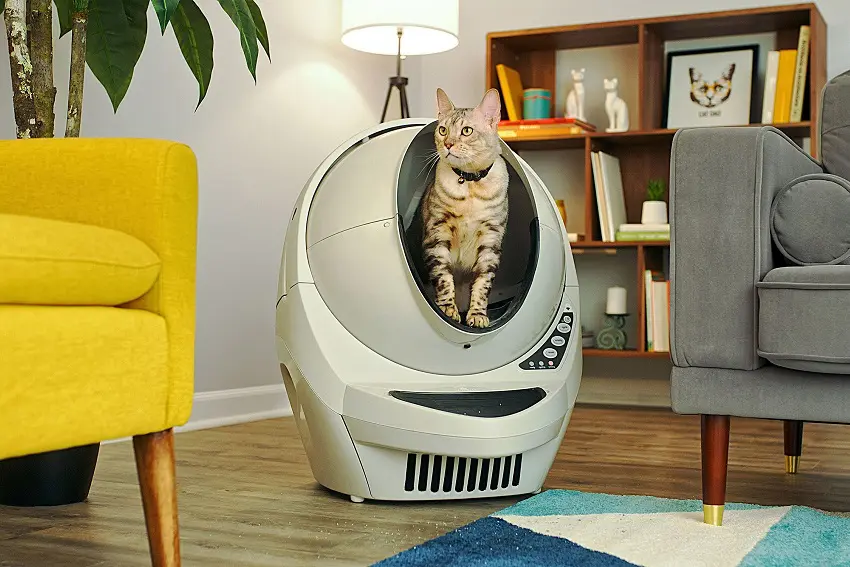
Do you know how much cats hate the smell of dirty toilet boxes? Most cats are so picky they will never use a smelly spot as a bathroom, which can become a huge problem.
Moreover, a study states, “Decreasing litter box odor may be an important treatment component in addressing feline inappropriate elimination.”
As such, it’s vital to address the issue of your Litter-Robot smelling bad as soon as possible. Otherwise, your cat might find alternative bathroom spots around the house!
So, why is your Litter-Robot smelling?
In our experience, your Litter-Robot should not smell as long as you clean the drawer on a regular basis. However, litter type, diet, and failure to change the carbon filter can all contribute to bad odors.
To help you solve the issue, let’s talk in detail about all these reasons.
1. Wrong Type of Litter
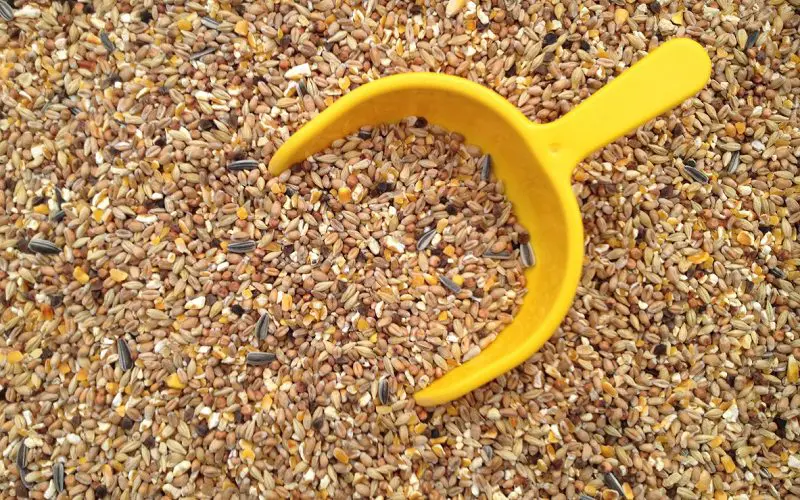
Cheap-quality litter is one of the most common reasons why your litter robot is smelling. If the brand can’t absorb moisture well, it won’t lock in the odor, and the bad smell will spread.
Moreover, since low-quality brands don’t have sufficient clumping power, it’s more challenging to use the self-cleaning function and get all the mess inside the waste drawer.
Think about it!
The sifting system works to remove the hard-formed clumps during the clean cycle. If the lumps are soft, the wet mess will spread all over the unit’s walls, increasing the foul odor.
In general, the best Litter-Robot litter is a high-quality, clumping brand with a low-dust, low-track formula and no artificial scents or ingredients.
You don’t have to pick a clay-based brand. Many non-clay cat litter brands work well with an automatic self-cleaning litter box, as long as they have sufficient clumping power.
I don’t recommend using scented clumping litter since it can increase the urine smell. Furthermore, not all cats like scented brands, and they may avoid the toilet box if it smells strange.
2. Skipping Deep Cleaning the Unit
Most cat owners assume that getting a Litter-Robot 3 or another similar self-cleaning unit will make keeping the litter box clean a piece of cake.
However, while automatic cat toilet boxes save you time when it comes to scooping, they require a little bit more maintenance than a standard litter box.
In these types of automatic cat toilets, it’s easy for stinky litter particles to accumulate on the inside. And if you don’t get rid of them, the entire unit will stink.
As such, it’s necessary to take apart your self-cleaning cat toilet and deep clean it with water and soft detergent at least once a month.
For households with multiple cats, it’s necessary to wash and clean the unit at least every two weeks to remove all cat feces and urine traces.
Check out this video for a demonstration of how to clean the unit well.
3. Not Washing the Waster Drawer
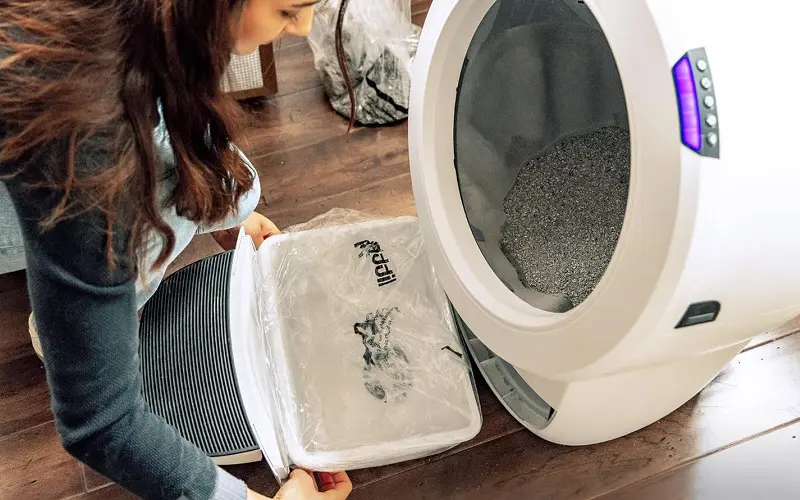
It’s not enough to wash the self-cleaning box’s globe to remove all traces of bad odors. You also have to clean the waster drawer as well.
Some owners forget about this step because of the waste drawer liners. While the best liners are very convenient for emptying the toilet, they aren’t enough for odor control.
For once, bad smells can soak through the liner’s layer, even with the best cat liners, and stinky up the whole drawer in a couple of weeks.
Moreover, small litter particles remain on the bottom of the drawer when you’re changing the liners. They’ll accumulate over time, leading to unpleasant odors.
As such, you should wash the waste drawer at least once a month if you have a single cat. For multiple cats, it’s better to wipe it down at least every two weeks.
4. Forgetting about the Carbon Filter
Do you know what the purpose of the carbon filter is?
It absorbs odors, bacteria, and moisture from the waste drawer, preventing mold growth and odor from spreading through the house.
However, the carbon strip is effective for a limited time. Once it gets too dirty, it won’t keep all unpleasant odors at bay.
So, if you haven’t changed the carbon strip, it could explain why your Litter-Robot smells bad.
In general, you should get a new filter every three to four months.
However, depending on how many cats you have and how frequently they use their toilet, you should replace the filters more often.
5. Your Cat’s Diet Is To Blame
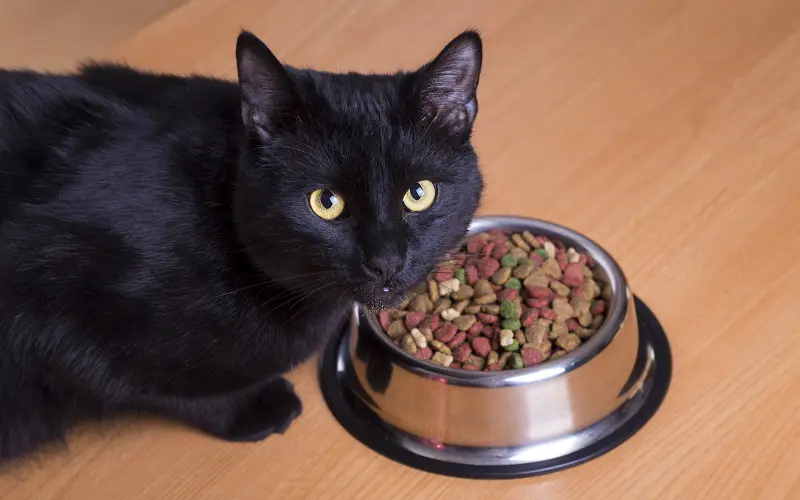
Some cats have stinkier poop than others, which can explain why some automatic litter boxes smell worse than others.
In these cases, you have to discover why your cat’s poop is so stinky to reduce the odor leakage. Usually, diet is the main culprit.
- Eating cheap-quality cat food can make your cat poop stinky because these brands are full of artificial ingredients that cause digestive inflammation.
- Some cats are sensitive to certain product ingredients, such as grains or proteins, leading to a foul smell from the feces.
- A high-protein diet also causes your cat’s stools to stink, especially if your cat catches live mice and birds. Wild animals carry various parasites and bacteria that can upset your cat’s digestion.
- A sudden change in your cat’s diet can also produce stinky poop, as your cat’s digestive system needs time to adapt.
Switch to a high-quality cat food brand or low-protein cat food, and wait a couple of weeks to see if it makes a difference.
6. Damaged Base Seals
If you’re having problems with your Litter-Robot, you should check the base seals. To reduce odor leakage, these brush-type seals fill the gap between the globe and the drawer.
However, these base seals wear flat and lose their sealing properties over time. As a result, you may notice that your unit smells worse than before.
Most owners of automatic litter boxes recommend that you check the seals frequently and replace them as soon as you notice any peeling or excess odors.
Fortunately, you can replace the sealing stripes by yourself if you purchase replacement seal strips or a seal kit with replacement carbon filters.
Check out this video for a demonstration of how to change the seal strips in the Litter-Robot.
7. Your Cat is Ill
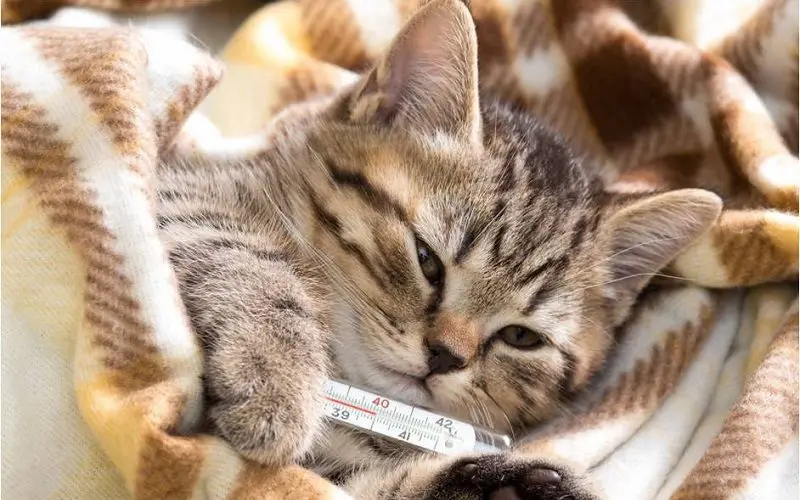
Cats have anal glands, which produce an extremely foul-smelling discharge when infected or blocked.
And this discharge can get all over your Litter-Robot when your cat uses the bathroom.
As a result, it doesn’t hurt to have your vet check your cat’s anal glands to rule out a medical condition if you continue to have odor problems.
Moreover, hormonal changes and medication can also change your cat’s bathroom habits and lead to excess odor when using the toilet.
8. Using the Wrong Cleaning Products
Think about how you’re washing your automatic cat toilet box.
It’s not enough to clean it with hot water because it won’t get rid of the smell of cat urine, and it will build up over time.
- Use antibacterial detergent to dissolve any urine residue and remove lingering odors.
- To clean the globe thoroughly and remove any stuck clumps and feces, get a soft bottle brush.
- Submerge the cat waste drawer in water with a pet-safe cleaning agent or a few drops of chlorine.
- Dry the parts well with a paper towel before assembling the unit and turning it on.
9. Technical Issues
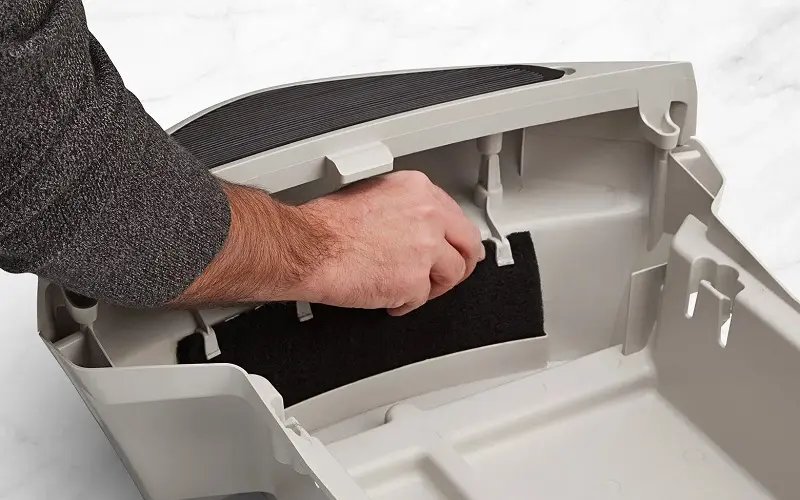
If you’ve ruled everything else out, you should consider technical issues. While most Litter-Robot customer reviews are positive, some do mention strong and unpleasant smells in new units.
I recommend that you contact customer support before your warranty is up. They can give you specific recommendations on what to check to ensure the unit is working as it should.
Keep in mind that some cats and kittens are too light to trigger the weight sensor, which means the machine won’t start the cleaning cycle.
As such, you may have to manually turn on the clean cycle to prevent the accumulation of unpleasant litter odor.
10. Your Cat Is Spraying
Cats spray urine to mark their territory and ward off any potential intruders. Urine marking is also a form of communication expressing stress, discomfort, or pain.
Intact males have the strongest-smelling urine because they’re trying to attract females and scare other tomcats from their territory.
However, despite common beliefs, fixed male and female cats can spray.
Neutered females continue urine marking in about 5% of cases, while neutered males do so in about 10% of cases.
So, it’s worth checking if your cat isn’t spraying the wall or the surface of the automatic litter box, explaining the bad smell. Then you’ll have to deal with the spraying cat to reduce the odors.
How to Deal with a Litter-Robot That Smells

Are you still having problems with your Litter-Robot smelling bad? Then I’ve got a couple of tricks up my sleeve to help you keep the litter box smell at bay.
1. Keep an Eye on The Sensors
The best way to prevent your Litter-Robot from getting smelly is to empty the drawer frequently. In this way, unpleasant odors won’t have time to accumulate.
Usually, you need to dispose of the trash once a week, but you can do it more often if you have multiple cats or notice that the sensor is blinking.
2. Use Baking Soda
Baking soda is a great tool in your fight with bad cat odors. It can neutralize cat urine and feces and prevent the growth of odor-causing bacteria inside the waste drawer.
All you have to do is sprinkle some baking soda on the fresh litter to minimize odors. You can use a vinegar and baking powder solution to scrub the waste drawer.
3. Try Scented Liner Bags
Don’t worry. If your automatic cat litter box stinks, try lining the drawer with scented liner bags. You don’t have to buy anything expensive; thrash bags are an excellent, cheap solution.
Usually, lavender garbage bags work very well because they don’t absorb odors, and the lavender fragrance will cover any foul aromas.
4. Consider OdorTrap
OdorTrap uses innovative technology with natural oils to attract and bind odor molecules. It then neutralizes odors through a chemical reaction.
The best thing about OdorTrap is that it can be used on automatic and traditional litter boxes, and it’s easy to attach.
5. Get an Air Purifier
An air purifier with a HEPA filter and active charcoal or carbon can do wonders for controlling cat odors around the house, especially in a multi-cat household.
These filters are also great for trapping cat dander and reducing allergens in the air.
6. Give Your Cat Time to Adjust
Have you checked whether your cat hasn’t found an alternative bathroom spot around the house because it’s scared of the automatic toilet box?
To reduce your pet’s anxiety and stress, you must give your feline time to adjust and train your cat to use the automatic box.
7. Switch to a Litter Brand With Charcoal
Some litter brands have added charcoal or baking soda for extra odor control. Switching to this brand can help reduce any left-over cat odors around the house.
FAQs
DOES THE LITTER-ROBOT CONTROL SMELL?
In general, no automatic litter box can contain unpleasant odors at 100%. However, Litter-Robot is quite efficient at stopping foul odors and doesn’t smell as long as you maintain it on a regular basis.
HOW OFTEN SHOULD I CLEAN MY LITTER-ROBOT?
Clean the waste drawer every week and the globe every two to three months. If you have multiple cats, you should clean the interior of the globe every month. You should take the unit apart twice or three times a year and give it a thorough cleaning.
HOW OFTEN DO YOU NEED TO REPLACE CAT LITTER?
You should add litter every time you empty the waste drawer, and check the fill line to ensure you don’t overfill it. The more cats you have that use the Litter-Robot, the more often you’ll have to change the litter.
Conclusion
The Litter-Robot is an excellent alternative to traditional toilet boxes and can make all the difference when you’re tired of scooping clumps all day long.
However, you must clean it on a regular basis to prevent the spread of bad odors, as well as pay attention to the carbon filters and base seals.
What do you think of these 10 reasons why your Litter-Robot smells? Do you have issues with unpleasant smells? Share your thoughts in the comment section.

Olfa knows how to get things done and has a keen business sense that others admire. She’s always on the go, coming up with new ideas! Her ability to anticipate the needs of her readers and deliver information that they want is what makes CatVills such a success. She loves cuddling her cat Picaciu. He is her inspiration.
